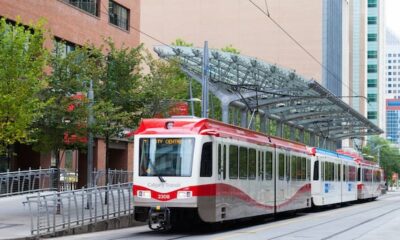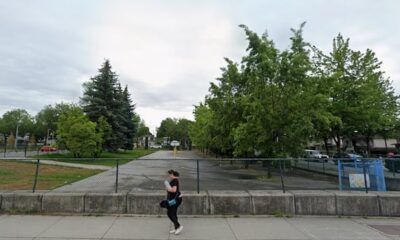Lifestyle
Vancouver Council Delays Shadowing Policy Amid Industry Concerns

Vancouver City Council has postponed significant changes to building shadowing regulations affecting downtown areas. The decision came after unanimous calls for further consultation with the real estate sector, reflecting concerns about the implications of the proposed guidelines. These regulations aim to protect public spaces from excessive shadowing, which is essential for preserving access to sunlight.
The proposed policy framework, titled “Solar Access Guidelines for the Downtown Peninsula,” was scheduled for approval during a public meeting on September 17, 2023. However, City Council opted to defer the decision, allowing staff more time to engage with industry stakeholders and refine the guidelines based on the feedback received. This delay is particularly significant as it occurs just before City Hall’s summer break, which lasts until early September.
During the discussions, Kevin Spaans, a senior development planner, explained that the new policies would focus on shadowing impact only on the fall equinox, specifically between 10 a.m. and 4 p.m. This time frame affects 21 community and public parks, four school sites, and the retail strip along Davie Street. Robson Street has a slightly different time frame, with restrictions from 10 a.m. to 3 p.m.
In addition to these broader guidelines, five specific public spaces will have stricter regulations, prohibiting any new shadowing during the fall equinox. These spaces include the Dr. Sun Yat-Sen Classical Chinese Garden, Library Square’s south plaza, and the cenotaph at Victory Square.
The proposed changes also aim to maintain current shadowing considerations while introducing flexibility for certain developments, particularly those featuring 100 percent social housing and other public benefits. Spaans noted that the existing shadowing policies are applied rigidly, and the new framework seeks to balance flexibility with the need for sunlight access.
Despite these intentions, confusion has emerged within the real estate industry, particularly after the release of the policy recommendations. Many developers expressed concern that the changes could significantly hinder new projects, undermining gains from recent relaxations to protected mountain view cones. Sarah Kirby-Yung, a city councillor, acknowledged receiving numerous communications from developers within a short time about potential ramifications of the proposed guidelines.
Jon Stovell, president and CEO of Reliance Properties, voiced his opposition during the meeting, describing the recommendations as a “significant restriction” that could complicate compliance with solar access requirements. He argued that the proposed changes would limit the height of future developments, including mixed-use residential and hotel towers, thereby impacting four of his company’s sites in downtown Vancouver.
City councillors also questioned whether a comprehensive analysis had been conducted to assess how the new guidelines might affect the potential floor area of buildings. While Spaans acknowledged the difficulty in predicting development patterns in downtown, he emphasized the need to create a framework that supports housing and development while ensuring adequate sunlight access.
The exemption for 100 percent social housing projects has raised additional concerns among councillors. Kirby-Yung pointed out the inconsistency in allowing shadowing for social housing while prohibiting it for other types of buildings. Spaans explained that existing city policies view social housing as an exceptional circumstance, which may unintentionally create the perception of leniency.
In light of these discussions, Josh White, the general manager of planning, urban design, and sustainability, indicated that the additional time until the September meeting will allow for further refinement of the policy clauses. He acknowledged the need to clarify the intent behind the recommendations and to ensure that the guidelines effectively balance public benefits with the need for sunlight access.
Last year, building shadowing guidelines outside the downtown area were simplified to align with spring and fall equinoxes, reflecting a standardized approach. However, the complexities surrounding shadowing policies in downtown Vancouver remain a contentious topic, with ongoing discussions expected to shape the future of urban development in the city.
-

 Politics4 weeks ago
Politics4 weeks agoSecwepemc First Nation Seeks Aboriginal Title Over Kamloops Area
-

 World5 months ago
World5 months agoScientists Unearth Ancient Antarctic Ice to Unlock Climate Secrets
-

 Entertainment5 months ago
Entertainment5 months agoTrump and McCormick to Announce $70 Billion Energy Investments
-

 Science5 months ago
Science5 months agoFour Astronauts Return to Earth After International Space Station Mission
-

 Lifestyle5 months ago
Lifestyle5 months agoTransLink Launches Food Truck Program to Boost Revenue in Vancouver
-

 Technology3 months ago
Technology3 months agoApple Notes Enhances Functionality with Markdown Support in macOS 26
-

 Lifestyle3 months ago
Lifestyle3 months agoManitoba’s Burger Champion Shines Again Amid Dining Innovations
-

 Top Stories2 months ago
Top Stories2 months agoUrgent Update: Fatal Crash on Highway 99 Claims Life of Pitt Meadows Man
-

 Politics4 months ago
Politics4 months agoUkrainian Tennis Star Elina Svitolina Faces Death Threats Online
-

 Sports5 months ago
Sports5 months agoSearch Underway for Missing Hunter Amid Hokkaido Bear Emergency
-

 Politics5 months ago
Politics5 months agoCarney Engages First Nations Leaders at Development Law Summit
-

 Technology5 months ago
Technology5 months agoFrosthaven Launches Early Access on July 31, 2025





















